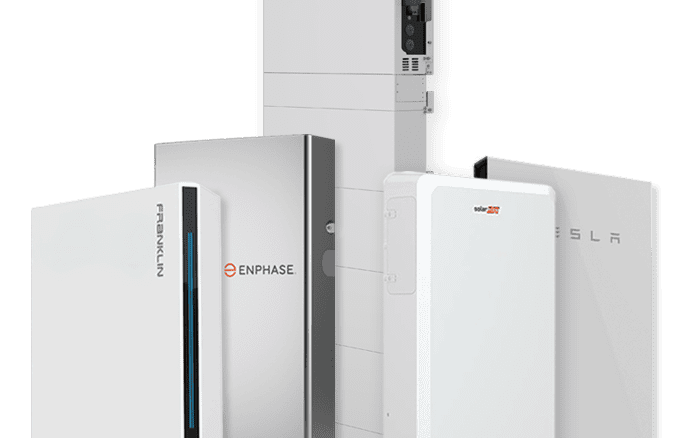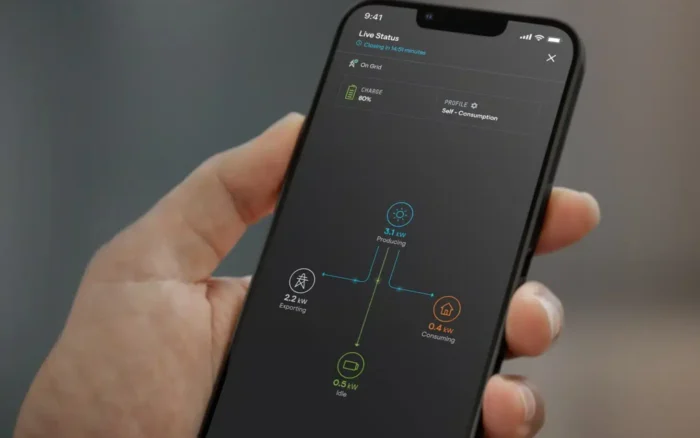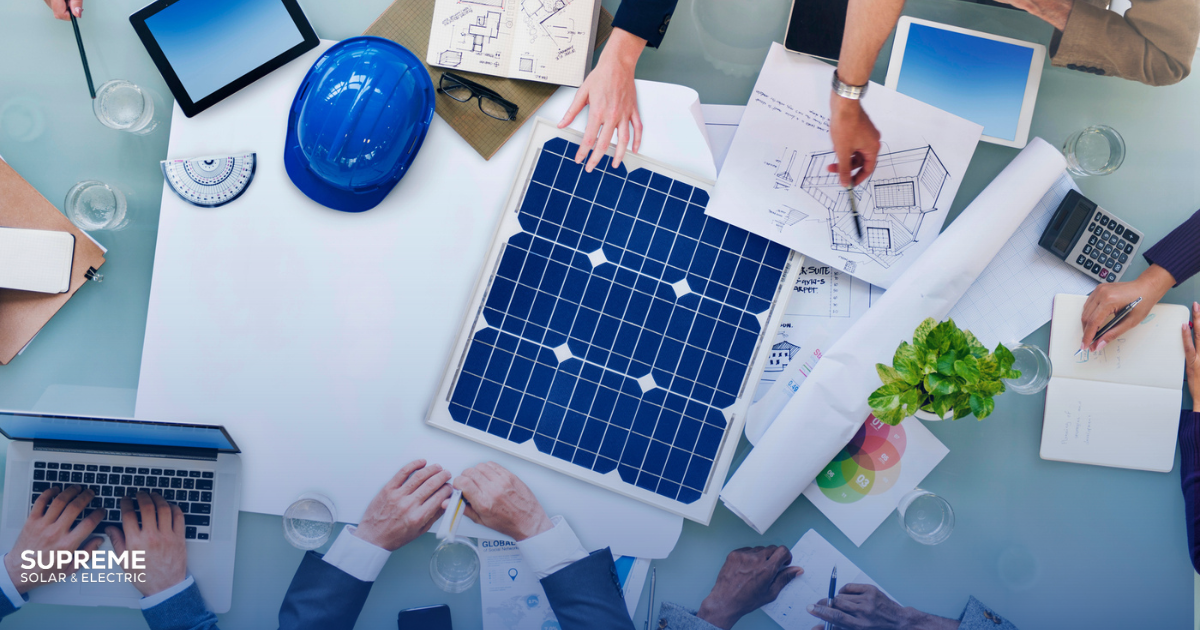1. Solar Panels Are More Powerful Than Ever
One of the most significant improvements in 2025 is the increase in solar panel efficiency and power output. Just a few years ago, most residential solar panels had an output of 300 to 330 watts per panel. Now, the industry standard has jumped to 420 to 460 watts per panel.
What Does This Mean for Homeowners?
- More Power from Fewer Panels – Since each panel produces more electricity, you don’t need as many to achieve the same output.
- Lower Installation Costs – Fewer panels mean less mounting hardware, fewer racking components, and lower labor costs.
- Better Energy Production in Limited Space – If you have a smaller roof, you can now generate more power with fewer panels, making solar a better option for homes with limited space.
With solar panel efficiency at an all-time high, homeowners can maximize their energy production while minimizing costs.
2. The Rise of Solar + Battery Storage
Battery storage has become one of the fastest-growing segments in the solar industry. More homeowners—both with new solar installations and existing systems—are choosing to pair their solar with battery storage.
Why Is Battery Adoption Increasing?
- Energy Independence – A solar battery lets you store excess solar energy during the day and use it at night or during a power outage, reducing reliance on the grid.
- Rising Utility Costs – Utility rates in California are projected to increase 40% over the next five years. A battery protects you from rising electricity costs by allowing you to use your stored energy instead of drawing from the grid.
- Power Outage Protection – Batteries provide a reliable backup power source, ensuring your home remains powered even when the grid goes down.
With more battery options than ever, homeowners can now choose a system that fits their needs and budget.

3. Smart Power Control Systems (PCS) Are Eliminating the Need for Electrical Upgrades
One of the biggest concerns for homeowners going solar has been electrical panel capacity. Many older homes require a main panel upgrade (MPU) to handle the power from a solar and battery system. This can add thousands of dollars to the installation cost.
How Power Control Systems Are Changing This
Power Control Systems (PCS) are smart inverters and battery technologies that automatically throttle down power output based on your home’s energy consumption. This means that instead of overloading your main electrical panel, the system can adjust energy flow to prevent the need for an expensive upgrade.
For homeowners, this means:
- Lower installation costs by avoiding a main panel upgrade.
- Smarter energy management that optimizes solar and battery usage.
- Better compatibility with older electrical panels.
PCS technology is helping make solar + battery installations easier, more affordable, and more accessible for homeowners.
4. Meter Collars: The Future of Battery Backup
A major breakthrough in 2025 is meter collar technology, which is revolutionizing how batteries integrate with homes.
What Is a Meter Collar?
A meter collar is a device installed at your utility meter that detects grid outages and automatically disconnects your home from the grid. This allows your battery to power your entire home without needing a backup loads panel or complex rewiring.
Why Is This a Game Changer?
- Whole-home backup without extra electrical work – No need for a backup loads panel to power your entire home.
- Faster installation – A meter collar is easier and cheaper to install compared to traditional backup configurations.
- Better battery functionality – It ensures that your system doesn’t send power back to the grid during an outage, keeping your home safe and powered.
The Tesla Powerwall 3 with Backup Switch is leading this innovation, but SolarEdge, Enphase, Franklin, and Neovolta have all announced that they are launching their own meter collar solutions soon.
5. Smart Electrical Panels Are Gaining Traction
Another major development in energy management is the rise of smart electrical panels. While still an emerging technology, these panels allow homeowners to control their circuits remotely through an app.
How Smart Panels Benefit Homeowners
- Turn circuits on and off remotely – Manage power usage from anywhere.
- Prioritize power usage during an outage – Choose which circuits stay on during a blackout.
- Track energy consumption in real-time – Monitor how much power each appliance is using.
As more manufacturers enter this space, smart panels will become a standard for homeowners looking for greater control over their energy usage.

6. Direct Solar-to-EV Charging is Making EVs More Efficient
With more people driving electric vehicles, integrating solar with EV charging is becoming a major focus in 2025.
What’s New?
Traditional EV chargers convert solar power to AC before charging, leading to energy loss. New direct DC-to-DC charging technology eliminates this inefficiency by sending solar energy straight to your EV battery without unnecessary conversions.
SolarEdge and other brands are leading this innovation, making home EV charging more efficient and cost-effective.
7. Your EV Can Now Power Your Home
Another exciting development is bi-directional charging, which allows electric vehicles to supply power to your home during an outage.
How It Works
- When the grid goes down, you can plug your EV into your home, and it will act as a backup battery.
- Instead of just using electricity, your car becomes a power source for essential appliances.
This technology is still rolling out but could be a game-changer for homeowners who want additional energy security.
Final Thoughts: Why 2025 is a Huge Year for Solar
This year has brought major advancements that make solar energy more efficient, affordable, and versatile than ever. From higher-wattage panels and battery breakthroughs to smart energy management and EV integration, homeowners now have more options than ever to take control of their energy usage.
If you’ve been considering solar or battery storage, now is the perfect time to make the switch. With rising utility costs and new technology making solar more effective, homeowners in Fresno, the Central Valley, and Palm Desert can lock in long-term savings and energy independence.






